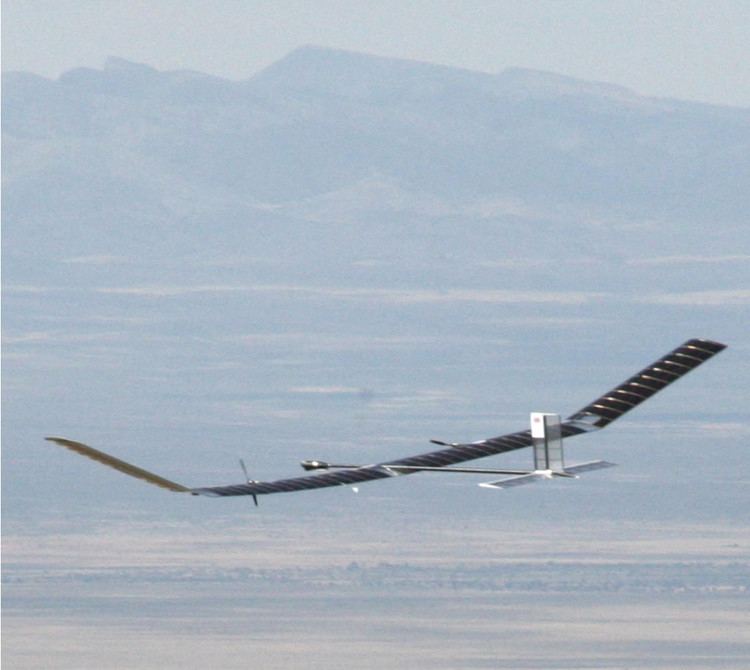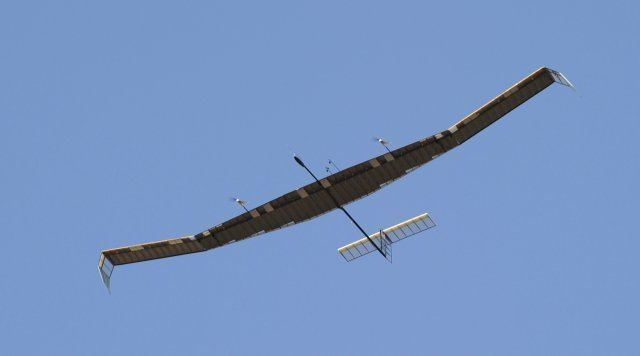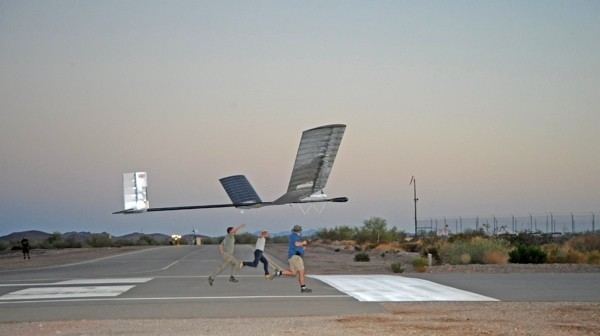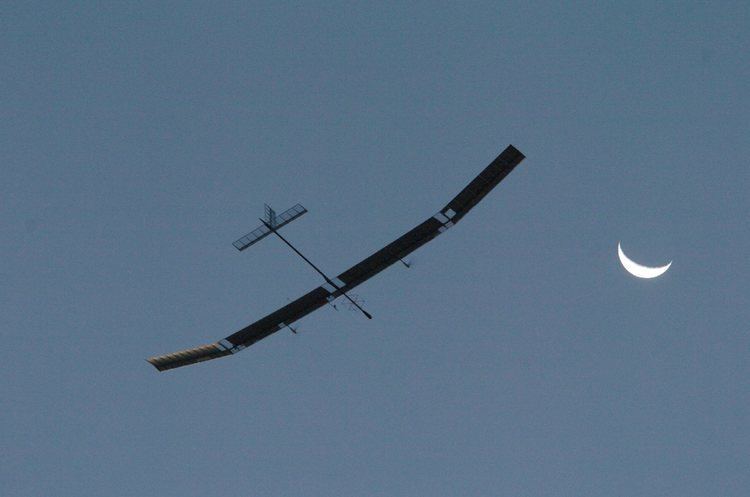Wingspan 18 m Manufacturer QinetiQ Group plc | Engine type Brushless electric motor | |
 | ||
The Airbus Zephyr is a series of lightweight solar-powered UAV originally designed and built in 2003 by the British company, QinetiQ. The development of the aircraft is ongoing and currently part of the Airbus High Altitude Pseudo-Satellite (HAPS) programme.
Contents

Development

The Zephyr 7 holds the official endurance record for an unrefuelled, unmanned aerial vehicle with its flight from 9 July to 23 July 2010, lasting 336 hours, 22 minutes and 8 seconds. It could also remain airborne for months thanks to its solar cells and rechargeable batteries. Record claims have been verified by the Fédération Aéronautique Internationale (FAI) for both duration and altitude, at 21,562 meters. It more than doubled the previous endurance record for unmanned flight.

In a 2008 demonstration for the US military, a smaller-scale version of the Zephyr (Zephyr 6) performed beyond the official world record for the longest-duration unmanned flight, however its 82-hour flight at an altitude of 61,000 ft (19,000 m) did not set an official record because FAI officials were not involved in the flight.

The Zephyr system was sold to EADS Astrium (now Airbus Defence and Space) in March 2013 where it was successfully re-flown as part of the High Altitude Pseudo-Satellite (HAPS) programme In 2014 it flew for 11 days in winter, and later near civilian airspace.
Design
It is of carbon-fibre construction, and uses sunlight to charge a lithium-sulphur battery during the day, which powers the aircraft at night. The aircraft has been designed for use in observation and communications relay.
The vehicle can circle over a particular area for extended periods with particular emphasis on its potential civil and military applications as an Earth observation and communications platform. During the day, Zephyr uses its state-of-the-art solar cells spread across its wings to recharge high-power lithium-sulphur batteries and drive two propellers. At night, the energy stored in the batteries is sufficient to maintain Zephyr in the sky. The lithium sulphur batteries are supplied by Sion, and the first version had a battery capacity of 3kWh.
Zephyr 7 was bigger and required five individuals to launch, as opposed to three previously. Zephyr 8 is now under development and will be bigger still, with a 28-metre wingspan.
The 53 kg Zephyr is capable of a maximum altitude between 65,000 and 70,000 feet
United Kingdom
In November 2015, in the House of Commons, British prime minister David Cameron laid out plans during the Strategic Defence and Security Review 2015, to further enhance Great Britain's intelligence, surveillance and reconnaissance (ISTAR) capacity. In the speech, he stated that the UK was to field a 'British-designed unmanned aircraft that will fly at the edge of the earth's atmosphere and allow us to monitor our adversaries for weeks on end, providing critical intelligence for our armed forces." A purchase of two Zephyr-8's was reported in February 2016. The British Ministry of Defence later confirmed the purchase of a third Zephyr 8 platform.
The Zephyr 8 will have roughly 24 kg of batteries and a 5 kg payload, and be 30 percent lighter and carry 50 percent more batteries than the Zephyr 7. In August 2016, the MOD confirmed the purchase of a third Zephyr.
In addition to Zephyr 8, otherwise known as Zephyr S, full-scale flight testing is scheduled for a twin-tailed Zephyr T variant in 2018 aimed at providing a maritime surveillance and communications capability.
Specifications (Zephyr 7)
Data from
General characteristics
Performance
